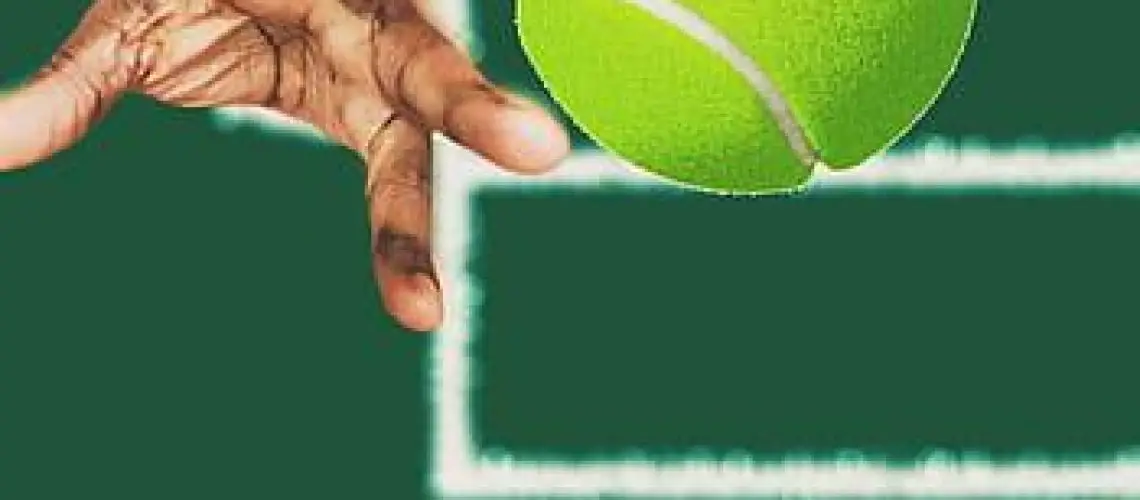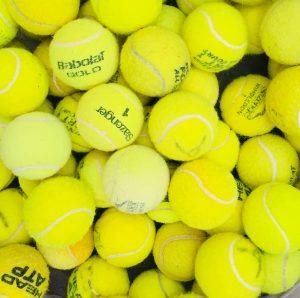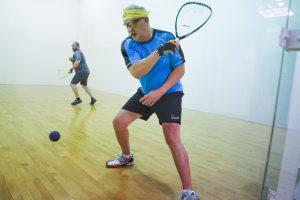We may earn money or products from the companies mentioned in this post.
Introduction to Returning a Serve in Tennis

Returning a serve in tennis is a crucial skill that every player must master It is the first opportunity to take control of the point and disrupt your opponent’s game plan A strong return can set the tone for the entire match, while a weak or ineffective return can put you on the back foot right from the start In this article, we will explore the importance of mastering the return of serve and discuss the key components of a successful return
Importance of Mastering the Return of Serve
The return of serve is an essential shot in tennis that can give you several advantages during a match Firstly, it allows you to establish an advantage in the point by putting pressure on your opponent right from their first shot By returning with depth, power, or precision, you can force your opponent into defensive positions and gain control over rallies
Secondly, mastering the return helps neutralize your opponent’s strong serves Many players have powerful serves that can be difficult to handle if not returned well By developing effective returning skills, you can nullify their strengths and level out the playing field
Lastly, an effective return adds pressure on your opponent as they serve When they see that you consistently make quality returns, it may cause doubts in their mind and make them more cautious with their serves This mental aspect can lead to unforced errors or weaker serves from your opponents throughout the match
Components of a Successful Return
To execute a successful return of serve, there are several key components that need to be considered:
-
Proper Stance and Positioning:
Having a solid starting position is crucial for reacting quickly and efficiently to different types of serves The stance should be balanced, with the feet shoulder-width apart and weight evenly distributed Being slightly crouched and on the balls of your feet allows for quick movements in any direction -
Reading the Serve:
The ability to read an opponent’s serve is essential for anticipating its trajectory and speed By observing their toss, grip, body position, and previous patterns, you can anticipate where the ball will go and make necessary adjustments to your positioning and footwork -
Effective Technique and Footwork:
The technique of the return shot should involve a combination of proper grip, swing path, timing, and follow-through Additionally, efficient footwork plays a crucial role in getting into an optimal position to strike the ball effectively Quick split steps or small shuffle steps help maintain balance while moving towards the ball
By focusing on these components and practicing them regularly, you can improve your return of serve skills significantly Remember that each player’s style may vary slightly based on personal preferences and strengths; however, mastering these fundamental aspects will lay a strong foundation for consistently effective returns
When it comes to mastering returns in tennis, your stance and positioning on the court play a crucial role Let’s dive into the different stances you can choose from and explore the advantages and disadvantages of each
Choosing your stance:
1 Eastern forehand grip:
The eastern forehand grip is a popular choice among aggressive players looking to generate power in their shots With this grip, your hand is positioned slightly to the right of the racket handle (for right-handed players). It allows for greater wrist flexibility, enabling you to hit powerful shots with topspin
Advantages:
– Offers more control over shot placement
– Facilitates powerful topspin shots
Disadvantages:
– Requires good wrist strength and flexibility
– May be less effective for players who prefer slice or flat shots
2 Continental grip:
The continental grip is known for its versatility and is often favored by consistent players seeking accuracy and variety in their returns In this grip, your hand is placed more towards the middle of the racket handle
Advantages:
– Provides versatility for different types of shots (slice, topspin, flat).
– Allows for quick adjustments in shot selection
Disadvantages:
– Can be challenging when generating high levels of power
– Requires precise technique to execute certain shots effectively
Ideal positioning on the court:
1 Gauge distance from baseline based on opponent’s serving style:
To optimize your returns, it’s essential to assess your opponent’s serving style and adjust your positioning accordingly
a) Stepping back to handle powerful serves:
When facing opponents with strong serves, stepping back from the baseline gives you more time to react and prepare for a forceful return This extra distance allows you to better handle the pace generated by powerful serves
b) Standing closer against spin-heavy serves:
Against opponents who rely heavily on spin serves such as kick or slice, standing closer to the baseline helps you counteract the spin effectively By positioning yourself nearer to the baseline, you can take the ball earlier and neutralize the effects of spin
In conclusion, understanding how your stance and positioning influence your returns is crucial for success on the tennis court Whether you opt for an eastern forehand grip or a continental grip, always consider your playing style and adjust your positioning based on your opponent’s serving style With practice and adaptability, you’ll be able to return serves with precision and confidence
Reading the opponent’s serve effectively

When it comes to tennis, one of the key elements in gaining an advantage over your opponent is reading their serve effectively By anticipating the direction of their serve, you can position yourself better and increase your chances of executing a successful return Here are some strategies to help you do just that
1 Observe ball toss patterns
An important clue to anticipate the direction of the serve lies in observing your opponent’s ball toss patterns A high toss is often an indication of more spin or slice being applied to the ball, while a low toss suggests a flat or fast serve coming your way
2 Analyze body movement and contact point clues
Another strategy is to carefully analyze your opponent’s body movement and contact point when serving Changes in their body position can provide valuable insights into their intended direction Additionally, observing their contact point can give you an idea about the type of spin they are applying to the ball
Timing your response to various types of serves
The timing of your response plays a crucial role in returning serves effectively Different types of serves require different reaction times:
-
Flat, powerful serves:
These types of serves demand quicker reactions from you as they come at higher speeds -
Spin-heavy serves:
On the other hand, spin-heavy serves require patience before executing your return as you need time to read and adjust to the spin applied
Techniques and footwork for efficient returns

Split-step – key to quick movement and balance
The split-step is a fundamental technique that allows you to react quickly and maintain balance on the court It involves executing a small jump and landing with your feet slightly apart, just before your opponent makes contact with the ball Adjusting the depth of your split-step based on the incoming serve is crucial in optimizing your movement
Different types of returns – understanding when to use each one
Knowing which type of return to use in different situations can greatly enhance your effectiveness in returning serves:
-
Defensive returns:
When facing powerful serves, a high and deep return can buy you valuable time to prepare for the next shot Alternatively, a slice return can provide you with more control over the ball -
Aggressive returns:
To seize control of the point early on, consider taking the ball early and applying pressure on your opponent by going for angles and down-the-line shots that exploit any openings
Footwork – essential aspect of returning serves effectively
Footwork is an essential aspect of returning serves efficiently By making small, quick steps, you can adjust your position before striking the ball accurately Additionally, proper body rotation and weight transfer are crucial for generating maximum power in your returns
With these strategies and techniques at hand, you’ll be better equipped to read and respond effectively to your opponent’s serve, giving yourself an edge in every match
Useful Links

Return of Serve Strategies for Doubles: The Ultimate Guide
How to return FAST serves effectively – five practical tips
How to return first serves in tennis – “Don’t come out …
How to Improve Your Return of Serve Technique
What Is A Return Of Serve In Tennis?
5 tips to focus on for “Return of Serve” – Tennis
10 Ways to Turn Your Return into an Advantage
Where to stand on the return of serve – and better cope with …
The Return of Serve – Tennis Talk – WordPress.com
How To Return A Tennis Serve Like A Pro
Serve is Out = Great Return, Explained
Returning Serve in Doubles
Tennis drills: the return of serve.
How to Improve Your Tennis Service Return as a Beginner?
What are the rules regarding return of serve in tennis …
WATCH: The Keys To A Great Return Of Serve In Tennis
How can I work on my return of serve? : r/tennis
Tennis Serve & Return Techniques






